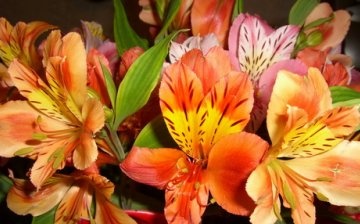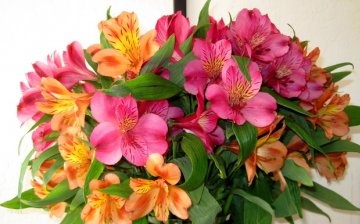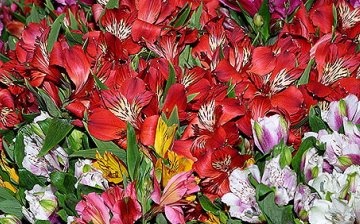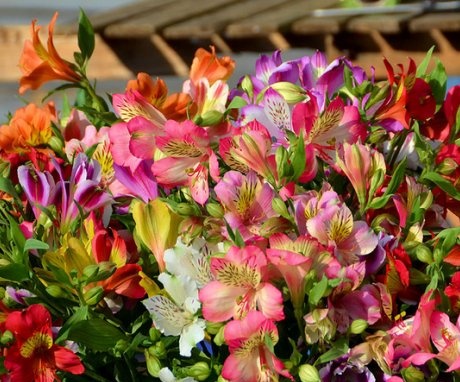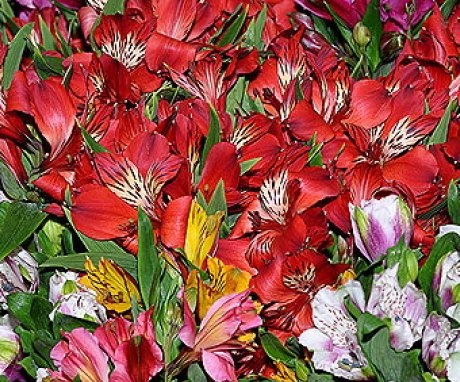Growing from alstroemeria seeds
Some of the dainty flowers are grown for garden decoration, and some are exclusively for cutting. A good option for decorating flower beds and getting long-lasting bouquets is alstroemeria. Spectacular flowers of various shades create excellent compositions in the garden, and luxurious bouquets of these flowers can stay fresh for up to 2 weeks.
Content:
- Alstroemeria is a flower that creates a mood!
- How is alstroemeria propagated?
- Planting alstroemeria in the ground and caring for it
Alstroemeria, a flower that creates a mood!
What is this amazing plant - alstroemeria? The birthplace of alstroemeria is South America, and it came to our area quite recently, even a few years ago it was not in the arsenal of our florists. The South American plant got its name in honor of the Swedish botanist and philanthropist Karl Alstremer who discovered it. This plant is called differently: alstroemeria, "Peruvian lily", "lily of the Incas".
Alstroemeria is a perennial herbaceous plant. In his homeland, there are more than 50 species in the wild, and only a few of them are grown in culture.
Alstroemeria forms a lush bush, the stems of which are very delicate and can grow up to 1 meter in height. At the tops of the stems are bright flowers, collected in large inflorescences. Outwardly, the flowers resemble the usual lilies or orchids, but because of the speckled pattern and attractive shape, they stand out very much from the rest of the flowering inhabitants of the garden.
Alstroemeria looks spectacular against the background of tall green bushes and creates wonderful compositions in combination with rudbeckia, coreopsis and evening primrose... If you want to cheer up, take a look at the blooming garden!
How is alstroemeria propagated?
Alstroemeria can be propagated by dividing the rhizome and seeds. Alstroemeria bushes are able to grow quickly and you can dig out part of the bush with dormant buds absolutely harmless to the plant and plant it at the same depth.
If watering is provided, the plants usually quickly settle in a new place and continue to grow. It is possible to divide the bushes only in adult plants, since the young after transplantation will take root for a long time and hurt.
If you decide to grow alstroemeria from seeds, keep in mind that the seed must be stratified, that is, pre-treated with cold.
To do this, the seeds are sown in a small container and placed in a plastic bag, and then sent to storage in a cool room, where the temperature should be within + 2-5 degrees. Crops should be stored in this state for 25-28 days. After the end of stratification, the container with crops is transferred to a warm place.
Shoots may appear soon after the end of stratification, but usually they are not very amicable. Some seeds germinate on the 10th day, and some take a whole month to germinate. If you sow the seeds of alstroemeria directly into the ground, then expect flowering no earlier than in the 3rd year.
You can grow alstroemeria seedlings by sowing seeds in containers at the end of February. Then the flowering of the plant can be expected in the 2nd year. For growing seedlings Prepare a light substrate consisting of turf soil and peat mixture. Sprinkle the seeds lightly with soil, moisten and cover with transparent glass. Place the container closer to natural light.Seedlings appear in 7-9 days. All they need is airing and watering.
Planting alstroemeria in the ground and caring for it
The grown and matured seedlings are planted in the ground at the end of spring or at the very beginning of summer, when there will be no morning frosts. The place in the garden for the alstroemeria is chosen open, sunny, but away from drafts. A good planting soil will be a mixture of 2 parts of leafy soil and 1 part of turf soil.
Despite the unpretentiousness, alstroemeria still requires regular maintenance. The soil around the bush must be constantly fluffed, moistened and weeds removed. On hot days, the roots should be mulched to protect them from overheating in the sun.
During the formation of buds and flowering, alstroemeria needs feeding... For this, complex fertilizers that do not contain nitrogen are better suited.
Unlike other horticultural crops, Alstroemeria is not very susceptible to disease. Most often, the plant is affected by gray rot. This occurs during heavy rainfall, when the roots gain excess moisture and begin to rot. Gardeners need to foresee such moments in advance and provide the root system with good drainage. To protect the plant from diseases at least once a season, preventive spraying with fungicides is performed.
Alstroemeria is a thermophilic plant and is very afraid of low temperatures. Being in the open ground, it can successfully endure winter only in those regions where the climate is mild.
To prepare the plant for wintering, in the middle of autumn, cut off the entire aerial part of the bushes, and sprinkle the roots well with fallen leaves, cover with foil and a layer of straw. In the middle lane, where more severe conditions and severe frosts, the roots of plants are dug up for the winter and stored in cellars until spring.



